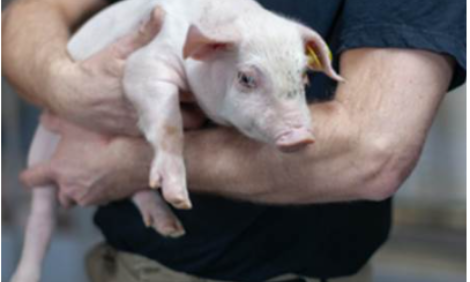



Comparable Farrowing Progress in Confined and Loose-housed Hyper-prolific Sows
A new Danish study reveals that confinement in a farrowing crate before and during farrowing did not affect farrowing progress of sows but confinement of the sows for four days after farrowing reduced piglet mortality.The aim of this study by scientists at the Danish Pig Research Centre and the University of Copenhagen was to determine the effect of confinement from day 114 of gestation and the first four lactation days on farrowing progress and piglet survival.
First-named author, J. Hales and co-authors explain in their paper in Livestock Science that all sows (parities 1 to 7) were randomly allocated to one of the four treatment groups (before/after farrowing):
- confined–confined (CC; n=30)
- confined–loose (CL; n=32)
- loose–confined (LC; n=28) or
- loose–loose (LL; n=30).
Before and during farrowing, sows in CC and CL were confined in crates whereas sows in LC and LL were loose-housed in this period. The first four days after farrowing, sows in CC and LC were confined in crates whereas sows in CL and LL were loose-housed during this time.
All sows were loose housed from day 4 until weaning.
Compared to loose sows (LC and LL), confinement before and during farrowing (CC and CL) did not affect total born piglets (P=0.69), stillborn piglets (P=0.68), farrowing duration (P=0.26) or birth interval (P=0.25). However, birth duration for stillborn piglets tended (P=0.06) to be shorter in the loose-housed sows than in confined sows.
Loose-housed sows with short farrowing duration (less than five hours) tended (P=0.06) to have fewer stillborns than confined sows with short farrowing duration. However, the number of stillborn piglets increased with increasing farrowing duration for loose-housed sows (P<0.05) but not for the confined sows.
Loose housed sows also had more live born deaths before litter equalisation when farrowing duration increased (P<0.05), an effect that was not seen in the confined sows.
Piglet mortality was greater for LL sows than for CC, CL and LC sows before litter equalisation.
After litter equalisation and until day 4, piglet mortality varied between treatments (P<0.001), with piglet mortality in LC (3.2 per cent) being lower than in CL (9.0 per cent) and in LL (7.5 per cent).
Similarly, piglet mortality was lower in the CC-treatment (5.0 per cent) than in the CL-treatment (9.0 per cent).
From days 4 to 7 after farrowing, sows in CC tended (P=0.10) to have greater piglet mortality than sows in LL.
Hales and co-authors concluded that confinement from day 114 of gestation until birth of the last piglet did not affect the farrowing progress compared to sows that were loose-housed.
However, they added, the results suggest that confinement of sows for four days after farrowing reduced piglet mortality compared to loose-housed sows.
Reference
Hales J., V.A. Moustsen, A.M. Devreese, M.B.F. Nielsen, and C.F. Hansen. 2015. Comparable farrowing progress in confined and loose housed hyper-prolific sows. Livestock Science. 171: 64-72.
February 2015








